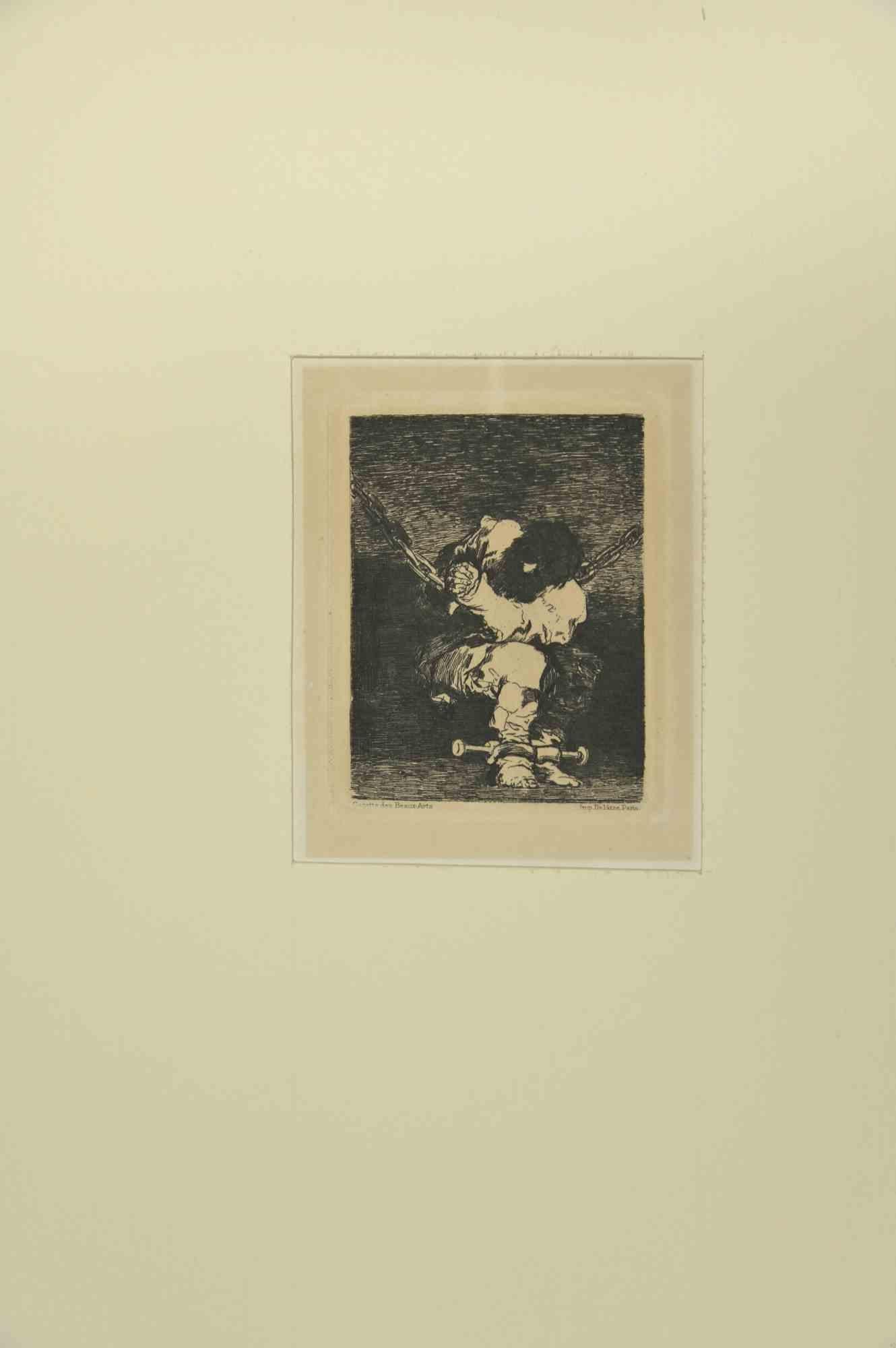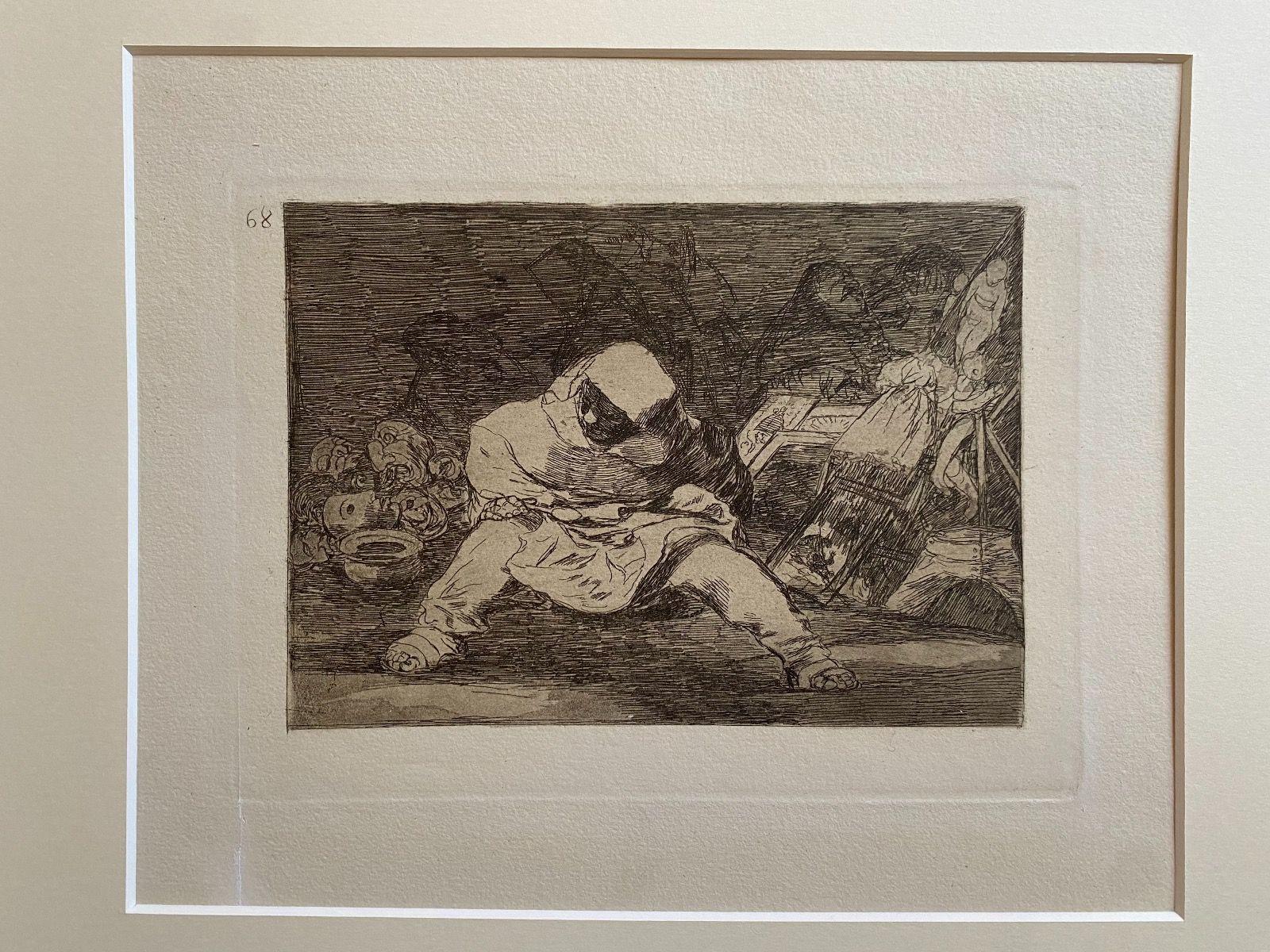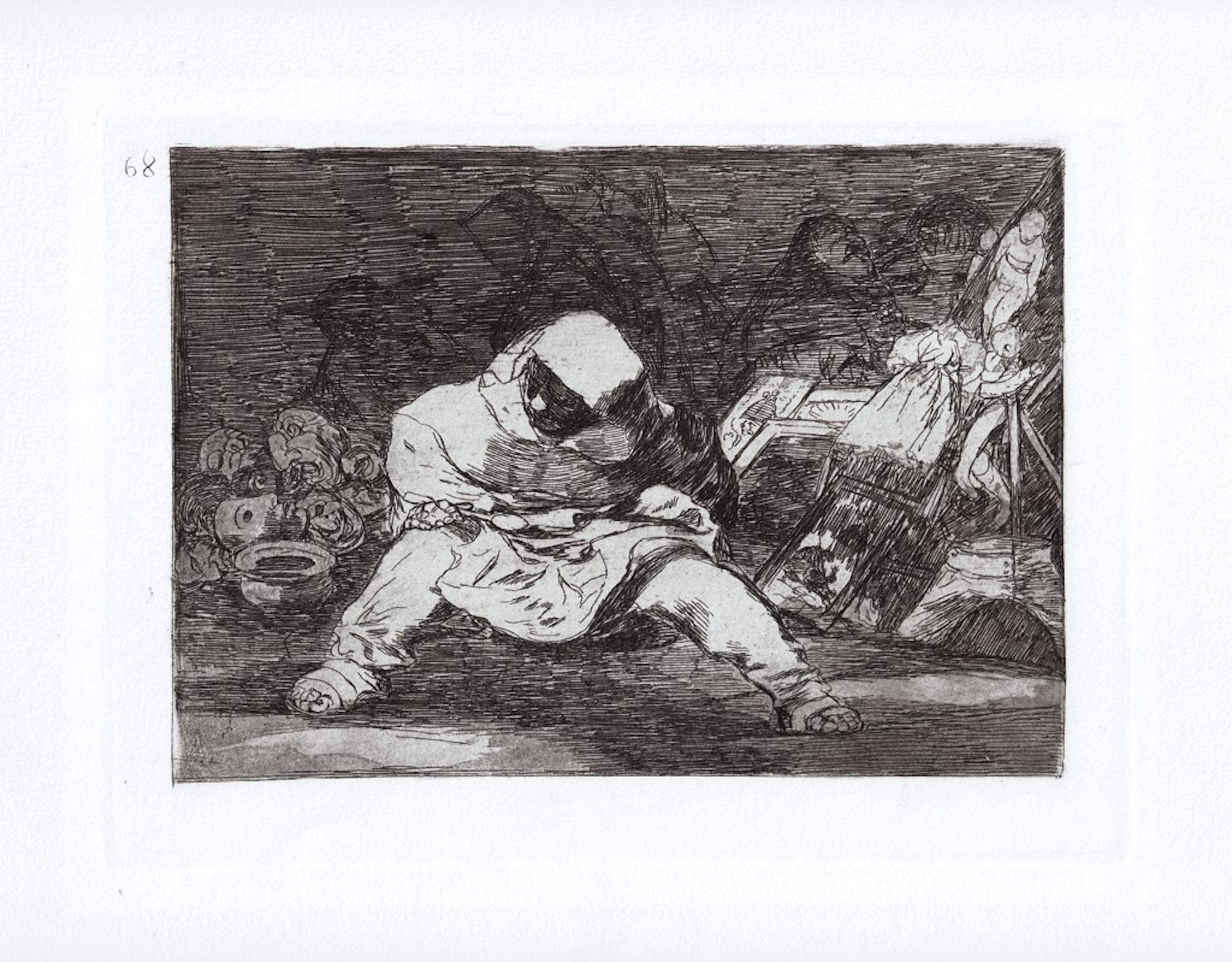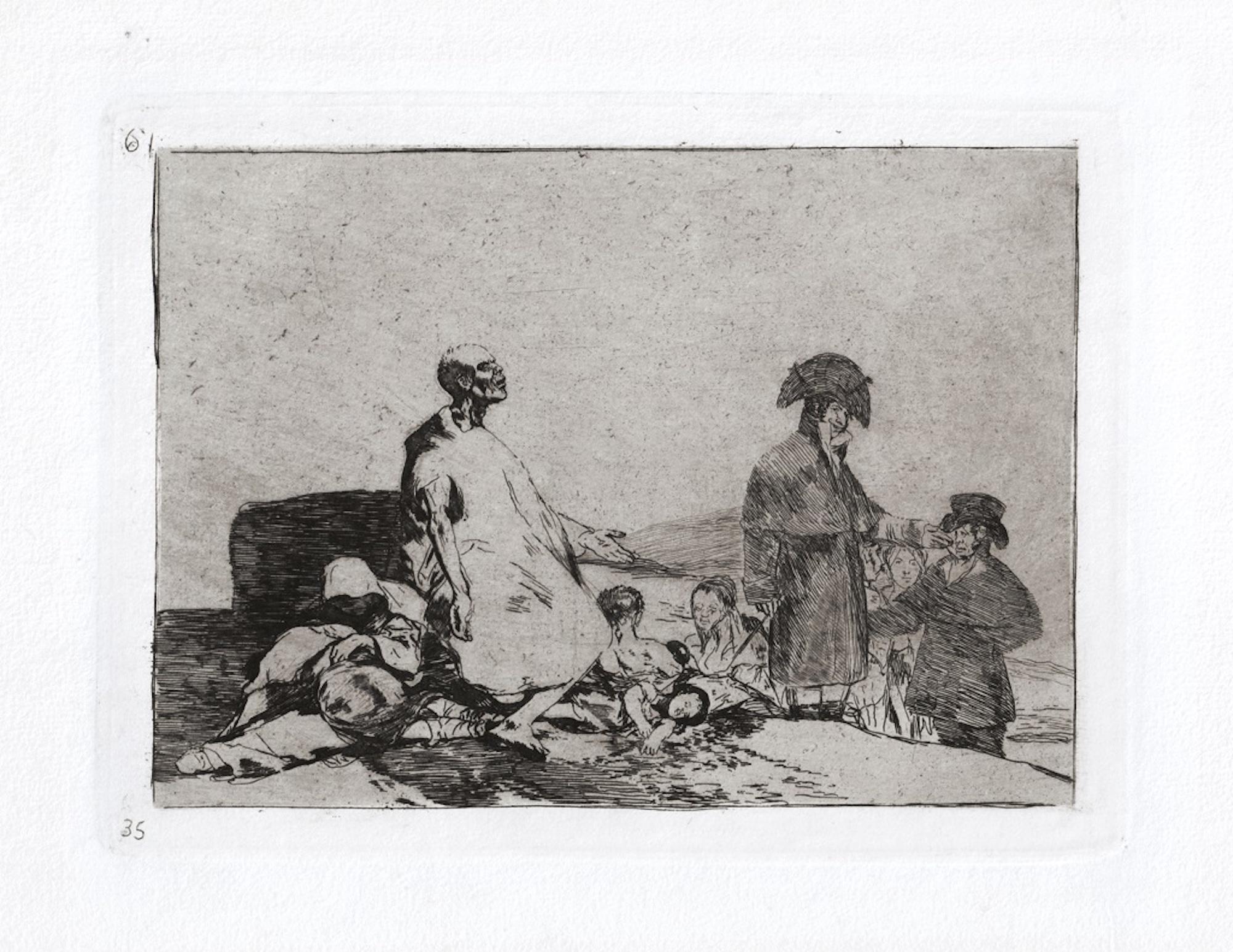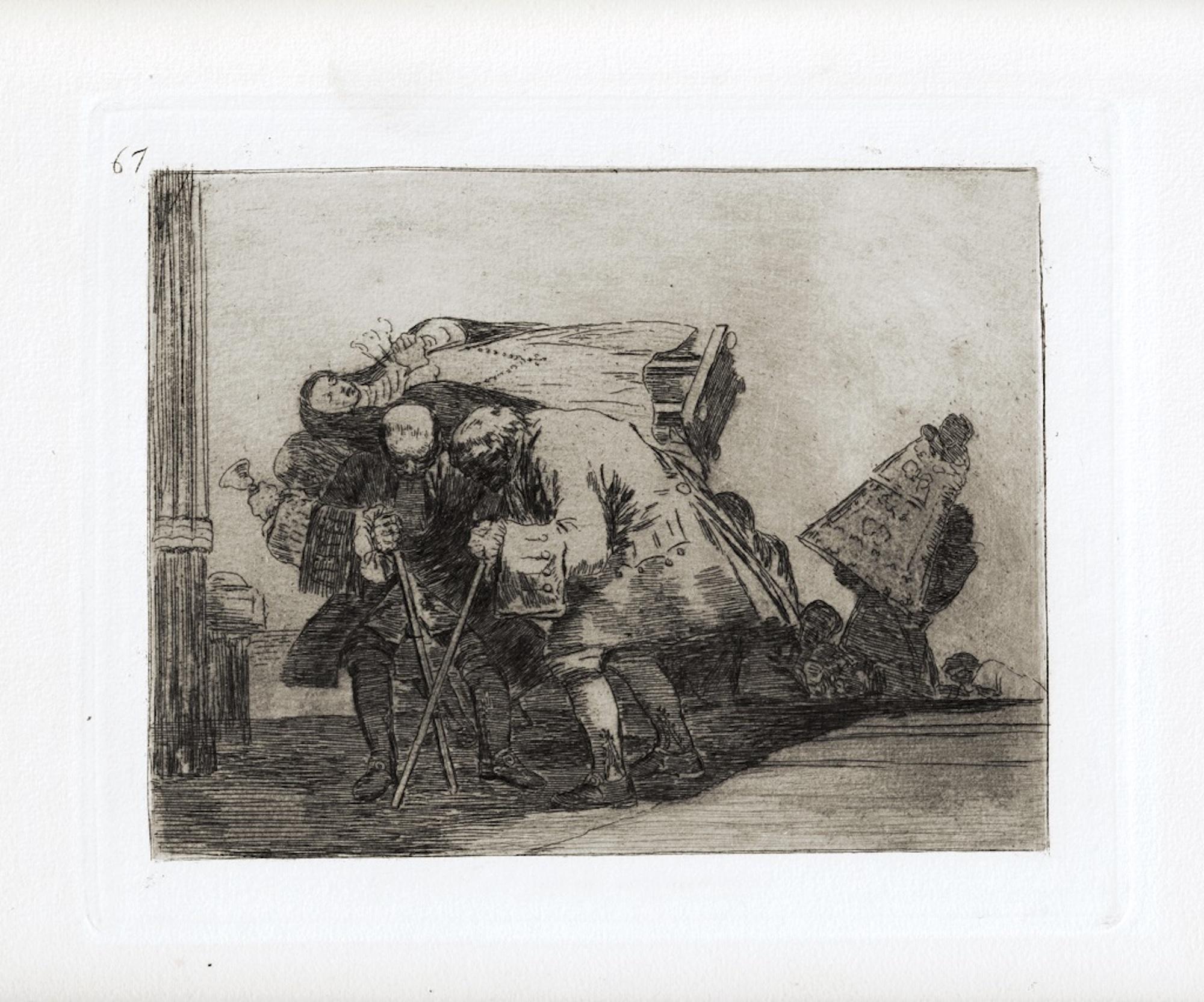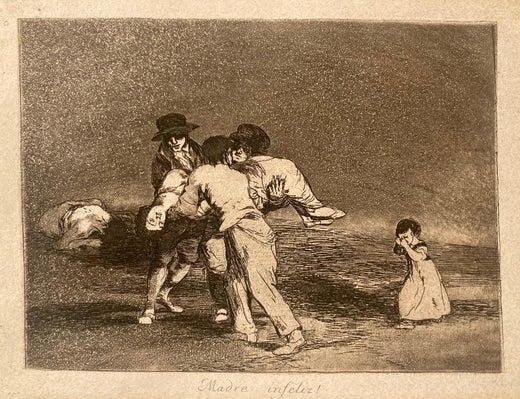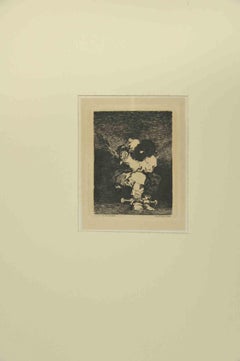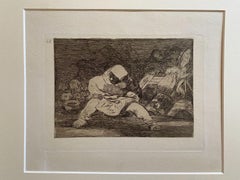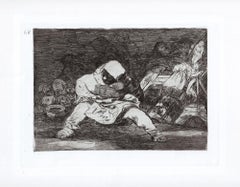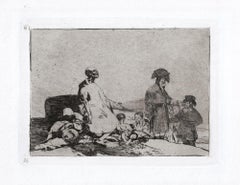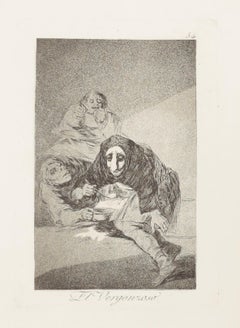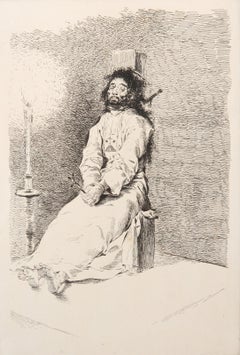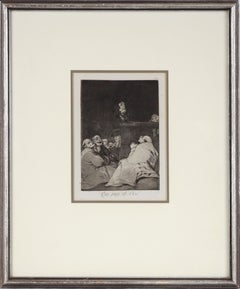Items Similar to Tan Bárbara la Seguridad Como el Delito - Etching after Francisco Goya - 1881
Want more images or videos?
Request additional images or videos from the seller
1 of 6
Francisco GoyaTan Bárbara la Seguridad Como el Delito - Etching after Francisco Goya - 18811881
1881
$950.15
£712.20
€800
CA$1,313.92
A$1,430.52
CHF 763.85
MX$17,268.61
NOK 9,602.98
SEK 8,931.89
DKK 6,095.12
About the Item
Tan bárbara la seguridad como el delito (The custody is as barbarous as the crime) is a black and White Etching after Francisco Goya, published in 1881-1886 .
Good Conditions.
Edition by Delatre for the Gazette des Beaux Arts.
- Creator:Francisco Goya (1746 - 1928, Spanish)
- Creation Year:1881
- Dimensions:Height: 8.27 in (21 cm)Width: 6.3 in (16 cm)Depth: 0.04 in (1 mm)
- Medium:
- Movement & Style:
- Period:
- Framing:Framing Options Available
- Condition:Insurance may be requested by customers as additional service, contact us for more information.
- Gallery Location:Roma, IT
- Reference Number:Seller: T-1491031stDibs: LU650314538642
Francisco Goya
Francisco José de Goya y Lucientes (1746-1828) was a Spanish romantic painter and printmaker. He is considered the most important Spanish artist of the late 18th and early 19th centuries. His works often contained a social message, like in his "Disasters of War" series. Immensely successful in his lifetime, Goya is often referred to as both the last of the Old Masters and the first of the moderns. He was also one of the great portraitists of his time.
About the Seller
4.9
Platinum Seller
Premium sellers with a 4.7+ rating and 24-hour response times
1stDibs seller since 2017
7,838 sales on 1stDibs
Typical response time: 1 hour
- ShippingRetrieving quote...Shipping from: Monaco, Monaco
- Return Policy
More From This Seller
View AllTan Barbara la Seguridad Como el Delito - Etching by Francisco Goya - 1867
By Francisco Goya
Located in Roma, IT
The custody is as barbarous as the crime (Tan barbara la seguridad como el delito) is an artwork realied by Francisco Goya y Lucientes, 1867.
Paris: Delâtre, 1867.
Etching and burin.
cm. 10.5x8.4.Sheet 21x16.2.
Excellent proof of III state and first edition after the appearance of the letter and the bevel of the plate, published in the Gazette des Beau-Arts, vol. XXII, p. 196.
Ref. Harris 26
Intact sheet with wide margins. Slight exposure yellowing around image.
Francisco José de Goya y Lucientes (Fuendetodos, March 30, 1746 - Bordeaux, April 16, 1828) was a Spanish painter and engraver. Considered the pioneer of modern art, he was one of the greatest Spanish painters who lived between the late eighteenth and early nineteenth centuries. His paintings, drawings and etchings of him reflected the ongoing historical upheavals and influenced the most important contemporary and following century painters. Goya is often referred to as the last of the old masters and the first of the moderns. Born into a middle-class family in 1746 in Aragon, he was a pupil of painting from the age of 14 to José Luzán y Martínez, later moving to Madrid to study with Anton Raphael Mengs. In 1786 he became court painter to the Spanish crown and this first part of his career was characterized by numerous portraits of members of the Spanish aristocracy and royal family, as well as by the production of rococo tapestries for the royal palace.
In 1793 he suffered from an undiagnosed serious illness which left him deaf, after which his work became progressively darker and more pessimistic. His subsequent paintings seem to reflect a bleak vision of existence, which contrasts with his resounding social ascent: in 1799, in fact, he became Primer Pintor de Cámara (First Court Painter), the highest rank for a Spanish court painter . In late 1799, commissioned by Godoy, he completed his Maja desnuda, a remarkably bold nude for the time and clearly inspired by the style of Diego Velázquez. In the early 19th century he painted The Family of Charles IV, again influenced by Velázquez. In 1807, Napoleon led the Grand Army in the Peninsular War against Spain. During the conflict Goya remained in Madrid and, although he never expressed his thoughts in public, it seems that these facts affected him deeply, as can be seen from some of his works such as The Disasters of War, The 2nd of May 1808, The 3rd May 1808. Other works of his maturity include a wide variety of paintings concerning madness, asylums, witches, fantastic creatures, and religious and political corruption, which suggest that he feared for his mental and physical health. His later period culminates with the Black Paintings of 1819-1823, made in the Quinta del Sordo, his home on the outskirts of Madrid where he lived, disillusioned by political and social developments in Spain, in a situation of almost isolation. Finally, in 1824, Goya decided to abandon Spain to retire to the French city of Bordeaux...
Category
1860s Modern Figurative Prints
Materials
Etching
Que Locura - Etching by Francisco Goya - 1863
By Francisco Goya
Located in Roma, IT
Que Locura - Plate 68 from Los Desastres de la Guerra (The Disaster of the War) is an original black and white etching realized by Francisco Go...
Category
1860s Modern Figurative Prints
Materials
Etching
Que Locura - Etching by Francisco Goya - 1863
By Francisco Goya
Located in Roma, IT
Que Locura is an original artwork realized by the great Spanish artist Francisco Goya in 1810.
Original Etching on paper.
The artwork belongs to the famous series "Los Desastres ...
Category
1860s Old Masters Figurative Prints
Materials
Etching, Aquatint
Si Son de Otro Linage - Etching by Francisco Goya - 1863
By Francisco Goya
Located in Roma, IT
Si son de otro linage is an original artwork realized by the great Spanish artist Francisco Goya in 1810.
Original Etching on paper.
The artwork belongs to the famous series "Los...
Category
1860s Old Masters Figurative Prints
Materials
Etching, Aquatint
Esta no lo es Menos - Etching by Francisco Goya - 1863
By Francisco Goya
Located in Roma, IT
Esta no lo es menos is an original artwork realized by the great Spanish artist Francisco Goya in 1810.
Original Etching on paper.
The artwork belongs to the famous series "Los D...
Category
1860s Old Masters Figurative Prints
Materials
Etching, Aquatint
Lo Mismo en Otras Partes - Etching by Francisco Goya - 1863
By Francisco Goya
Located in Roma, IT
Lo Mismo en otras partes is an original artwork realizedb by the great Spanish artist Francisco Goya in 1810.
Original Etching on paper.
The artwork belongs to the famous series "Los Desastres de...
Category
1860s Old Masters Figurative Prints
Materials
Etching, Aquatint
You May Also Like
The Custody is as Barbarous as The Crime, Etching by Francisco de Goya
By Francisco Goya
Located in Long Island City, NY
Francisco de Goya, Spanish (1746 - 1828) - The Custody is as Barbarous as The Crime, Year: circa 1810, Medium: Etching and burin on cream laid paper, Image Size: 3.75 x 3 inches, Si...
Category
1810s Surrealist Figurative Prints
Materials
Etching
El Vergonzoso (Plate 54) (Los Caprichos Series)
By Francisco Goya
Located in London, GB
Francisco Jose Goya Y Lucientes
El Vergonzoso (Plate 54)
(Los Caprichos Series)
1799
Etching with aquatint
31.5 x 20.5 cms (12.4 x 8.1 ins)
Category
Late 18th Century Figurative Prints
Materials
Etching
Le Supplice du Garrot, Old Masters Heliogravure Etching by Francisco de Goya
By Francisco Goya
Located in Long Island City, NY
Francisco de Goya, After by Amand Durand, Spanish (1746 - 1828) - Le Supplice du Garrot, Year: 1875, Medium: Heliogravure, Size: 12.5 x 8.5 in. (31.75 x 21.59 cm), Printer: Amand Durand, Description: An Amand Durand etching...
Category
1870s Old Masters Figurative Prints
Materials
Etching
"Que pico de Oro" (What a Golden Beak) - Etching and Aquatint on Paper
By Francisco Goya
Located in Soquel, CA
"Que pico de Oro" (What a Golden Beak) - Etching and Aquatint on Paper
5th or 8th edition print of "Que pico de Oro" from the Los Caprichos with burnished aquatints, drypoints etchi...
Category
1790s Northern Renaissance Figurative Prints
Materials
Engraving, Etching, Aquatint, Laid Paper
OBSEQUIO á el MAESTRO (‘A gift for the master’)
By Francisco Goya
Located in Santa Monica, CA
FRANCISCO de GOYA y LUCIENTES (1746 -1828)
OBSEQUIO á el MAESTRO (‘A gift for the master’) Plate 47 from the 1st edition of Los Caprichos (Blas, ...
Category
1790s Old Masters Figurative Prints
Materials
Etching, Aquatint
Francisco Goya Miren Que Grabes from Los Caprichos 1868 Etching Framed
By Francisco Goya
Located in Keego Harbor, MI
A macabre etching and aquatint on paper titled “Miren que grabes!” from Los Caprichos by Spanish artist Francisco Goya. Signed in the plate. Numbered 63 ...
Category
Antique 1860s Prints
Materials
Paper
More Ways To Browse
Andy Warhol Electric Chair Art
Antique Lawyer Prints
Arnold Friberg
Atoms For Peace
Bill Katz
Book Of Job William Blake
Book Of Mormon
Botero Fernando Lithograph
Botero Lithograph
Carlo Gregori
Christian Dior Vintage Posters
Dali Bullfight
Dali Chevalier
Dali Frank Hunter
Dali Peter
Dali Surrealist Flowers
Dali Vitraux
Damien Hirst Mickey
